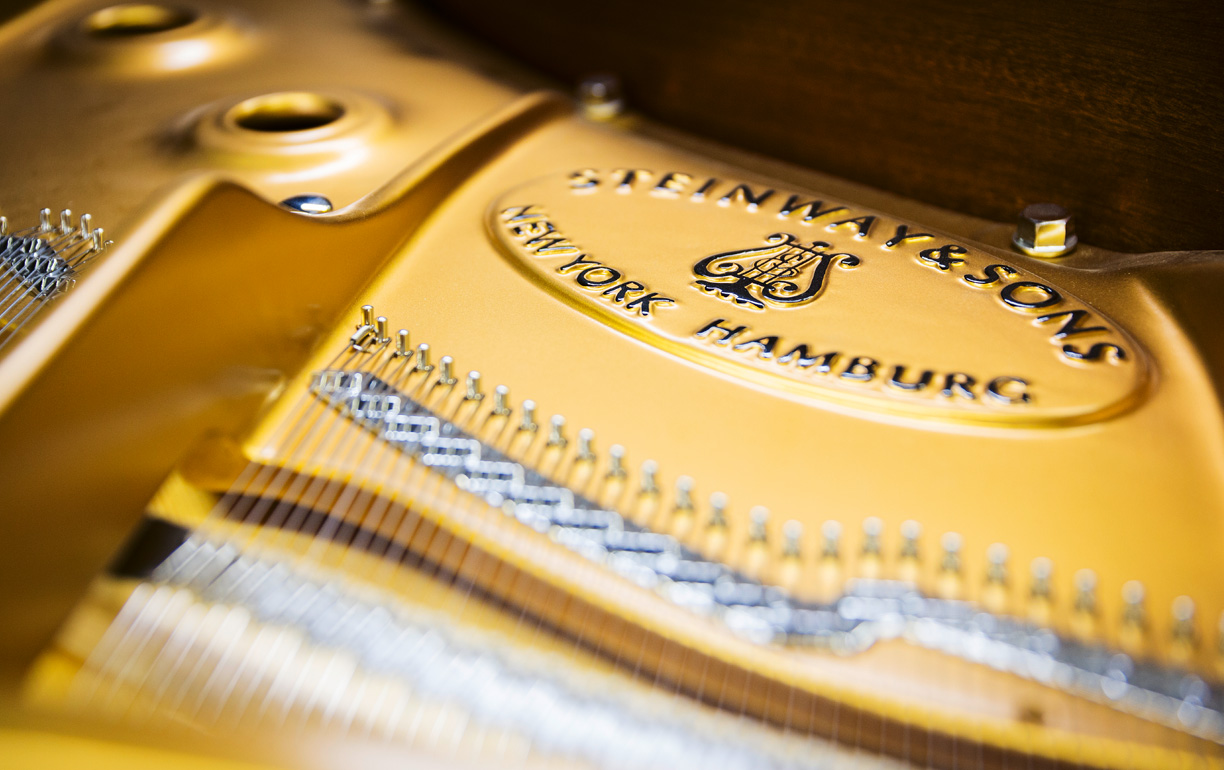
Keys and wings.
Each one is a hand-made masterpiece – coveted around the world. Many of the grand pianos made by Steinway & Sons reach their destination via td.Pro.
It was love at the first sound for the Chinese pianist: the wood, the sheen, and especially the sound, a sound that enjoys an exalted reputation among music lovers and in concert halls around the world. In the selection hall of Steinway & Sons in Hamburg – amid a constant coming and going of the great concert pianists of our time and of concert hall experts – he chose “his own” D-274. Master piano builder Erhart Steinhauß, having just tuned the instrument one last time, lowers the fallboard and attaches the “Selected” sign.
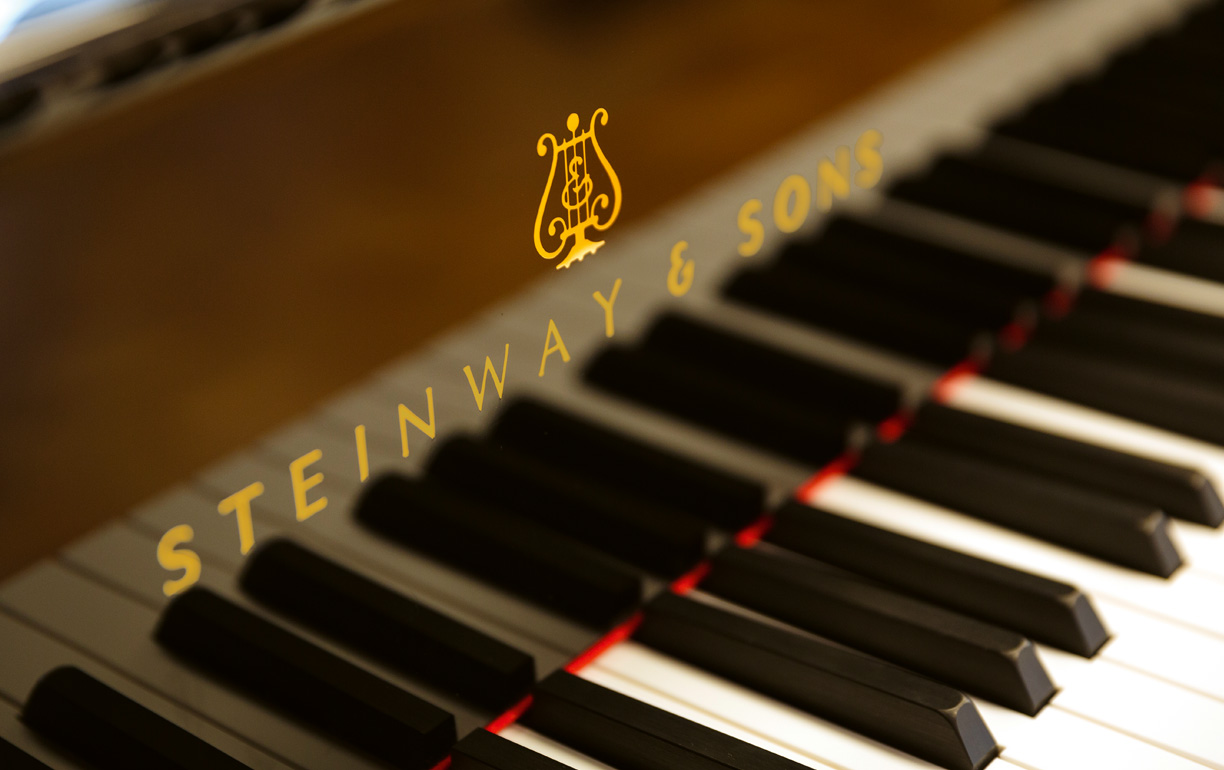
It took around one year to build the D-274, and now it will be leaving Hamburg on its way to China – as standard freight shipped td.Pro on board a Lufthansa Cargo plane. Sitting on steel transport legs, the grand piano is carefully rolled into the elevator on the way to the shipping department. The elevator descends to the accompaniment of the high-pitched buzz of the piano string winding machine and the many-voiced hum of strings struck emanating from one of the brightly lit production halls on the first floor. Then the elevator doors open to the basement, and the shipping team of Martin Lewis takes over.
td.Pro is perfect for grand pianos: Gentle and quick.
Td.Pro is perfect for grand pianos: Gentle and quick.
The D-274 undergoes a number of visual quality checks for the very last time. Should it ever be required, this is where the varnish is touched up or repolished. As in production, it is all craftsmanship, meticulousness and devotion to the task at
hand: “All of us throughout the building work with our hands
and our ears only,” says Lewis.
The Englishman from Liverpool has been with Steinway & Sons in Hamburg for eleven years now. He and his team cover the entire world map of concert grand pianos: from its Hamburg base, Steinway & Sons deliver to Europe, Australia,
Africa and the boom market in Asia. “Over recent years Asia has clearly become the market exhibiting the strongest growth. People in China especially love the piano, and that includes our grand pianos,” says Lewis.
Only the American market is supplied from Steinway’s New York production facilities – a rule that comes with exceptions. Instruments made by Steinway & Sons are coveted around the world: in the 2015/2016 concert season, 96.5 percent of pianists chose Steinway. The grand pianos from the company established in 1853 by Heinrich Engelhard Steinweg (a German-born immigrant to the United States, after he changed his name to Henry Engelhard Steinway) are found in all of the world’s leading concert halls – at Carnegie Hall and at the Sydney Opera House as well as at the new Elbphilharmonie. The wings of Lufthansa Cargo have proved to be essential in the journey to the world’s concert stages and to pianists and music lovers everywhere – as well as for trips back to the Hamburg base for major repairs. “We ship 40 percent of our instruments by airfreight,” says Lewis. The principal reason for doing so is that transport by air is a great deal easier on the cargo than transport by sea.
Georges Ammann, one of the highly specialised concert technicians preparing instruments for the performances of Steinway concert pianists like Mitsuko Uchida and Lang Lang on every continent, explains: “The boys from Lufthansa Cargo do a really good job, also in terms of handling the instruments.
On board a ship, however, the grand pianos are exposed to strong vibrations and large fluctuations in temperatures for a period of weeks. This puts enormous stresses on an instrument.”
Time is also a factor: “Customers want to take possession of their instruments as quickly as possible. Airfreight takes three to four days, whereas seafreight can often take more than six weeks,” adds Martin Lewis. Prior to being dispatched by airfreight, the D-274 is covered in three layers of antistatic foil and paper, and then bolted onto a wooden transport sled. The pedal system and the legs are packaged in separate cardboard boxes. The whole grand piano is then placed inside an outer carton bearing Shockwatch stickers. The shock indicator is a reliable means of gauging whether an instrument has remained within the prescribed shock tolerances throughout the transport.
Schockwatch-tested
At this point the transport company A. Hartrodt takes over. Their staff members are well-versed in these kinds of jobs: their authorized representative has been transporting grand pianos from Steinway & Sons to airports for many years. “We’re proud to have been entrusted with the responsibility for this task,” says Sören Gräzuweit, team leader for Airfreight Export Hamburg of A. Hartrodt. At the World Cargo Center at Hamburg Airport, the D-274 declared as td.Pro cargo is x-rayed and then placed on an airfreight pallet. On board a Hartrodt truck, the journey then usually continues on to Frankfurt, from where the Lufthansa
Cargo freighters take off. Other employees of A. Hartrodt will be ready to receive the grand piano in Hong Kong and to move it to its final destination. Where yet another act of devoted craftsmanship will be performed: a Steinway technician will check the instrument and tune it – and then it will be ready to delight with its perfect sound.
td.Pro is perfect for grand pianos: Gentle and quick.
|
The D-274 undergoes a number of visual quality checks for the very last time. Should it ever be required, this is where the varnish is touched up or repolished. As in production, it is all craftsmanship, meticulousness and devotion to the task at hand: “All of us throughout the building work with our hands and our ears only,” says Lewis. The Englishman from Liverpool has been with Steinway & Sons in Hamburg for eleven years now. He and his team cover the entire world map of concert grand pianos: from its Hamburg base, Steinway & Sons deliver to Europe, Australia, Georges Ammann, one of the highly specialised concert technicians preparing instruments for the performances of Steinway concert pianists like Mitsuko Uchida and Lang Lang on every continent, explains: “The boys from Lufthansa Cargo do a really good job, also in terms of handling the instruments. |
On board a ship, however, the grand pianos are exposed to strong vibrations and large fluctuations in temperatures for a period of weeks. This puts enormous stresses on an instrument.” Time is also a factor: “Customers want to take possession of their instruments as quickly as possible. Airfreight takes three to four days, whereas seafreight can often take more than six weeks,” adds Martin Lewis. Prior to being dispatched by airfreight, the D-274 is covered in three layers of antistatic foil and paper, and then bolted onto a wooden transport sled. The pedal system and the legs are packaged in separate cardboard boxes. The whole grand piano is then placed inside an outer carton bearing Shockwatch stickers. The shock indicator is a reliable means of gauging whether an instrument has remained within the prescribed shock tolerances throughout the transport. Schockwatch-tested At this point the transport company A. Hartrodt takes over. Their staff members are well-versed in these kinds of jobs: their authorized representative has been transporting grand pianos from Steinway & Sons to airports for many years. “We’re proud to have been entrusted with the responsibility for this task,” says Sören Gräzuweit, team leader for Airfreight Export Hamburg of A. Hartrodt. At the World Cargo Center at Hamburg Airport, the D-274 declared as td.Pro cargo is x-rayed and then placed on an airfreight pallet. On board a Hartrodt truck, the journey then usually continues on to Frankfurt, from where the Lufthansa Cargo freighters take off. Other employees of A. Hartrodt will be ready to receive the grand piano in Hong Kong and to move it to its final destination. Where yet another act of devoted craftsmanship will be performed: a Steinway technician will check the instrument and tune it – and then it will be ready to delight with its perfect sound. |
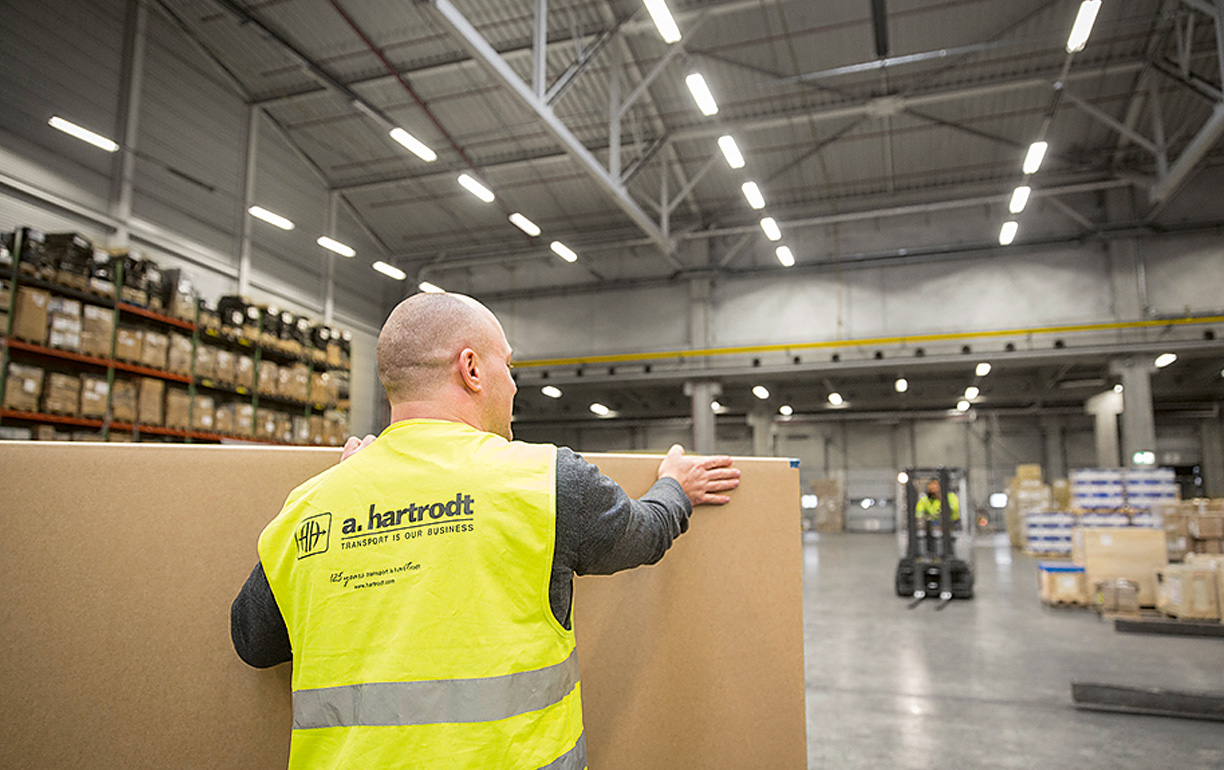
Before the handling professionals from A. Hartrodt put the valuable freight through the x-ray machine and prepare it for transportation by Lufthansa Cargo, it is carefully wrapped and packaged at Steinway & Sons.
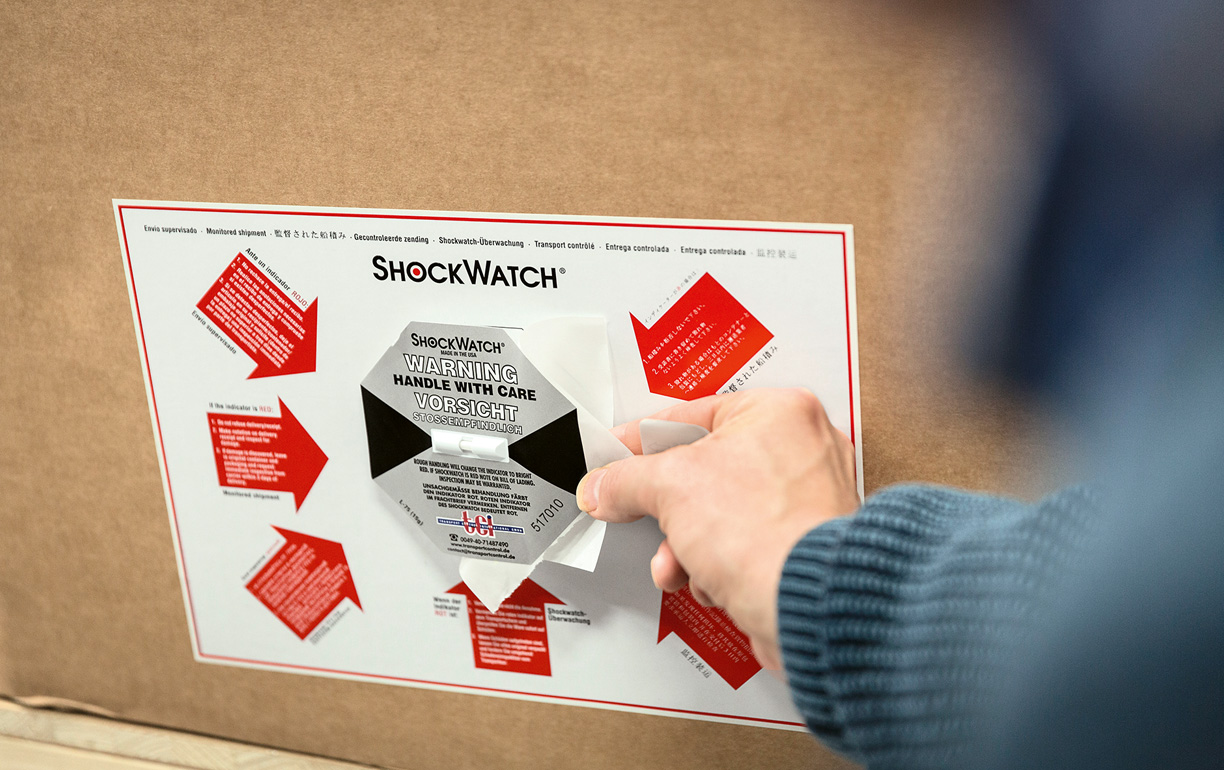
Once packaging is completed, a Shockwatch sticker is put on the box – the colour of the shock indicator changes to red if it is exposed to strong vibrations.
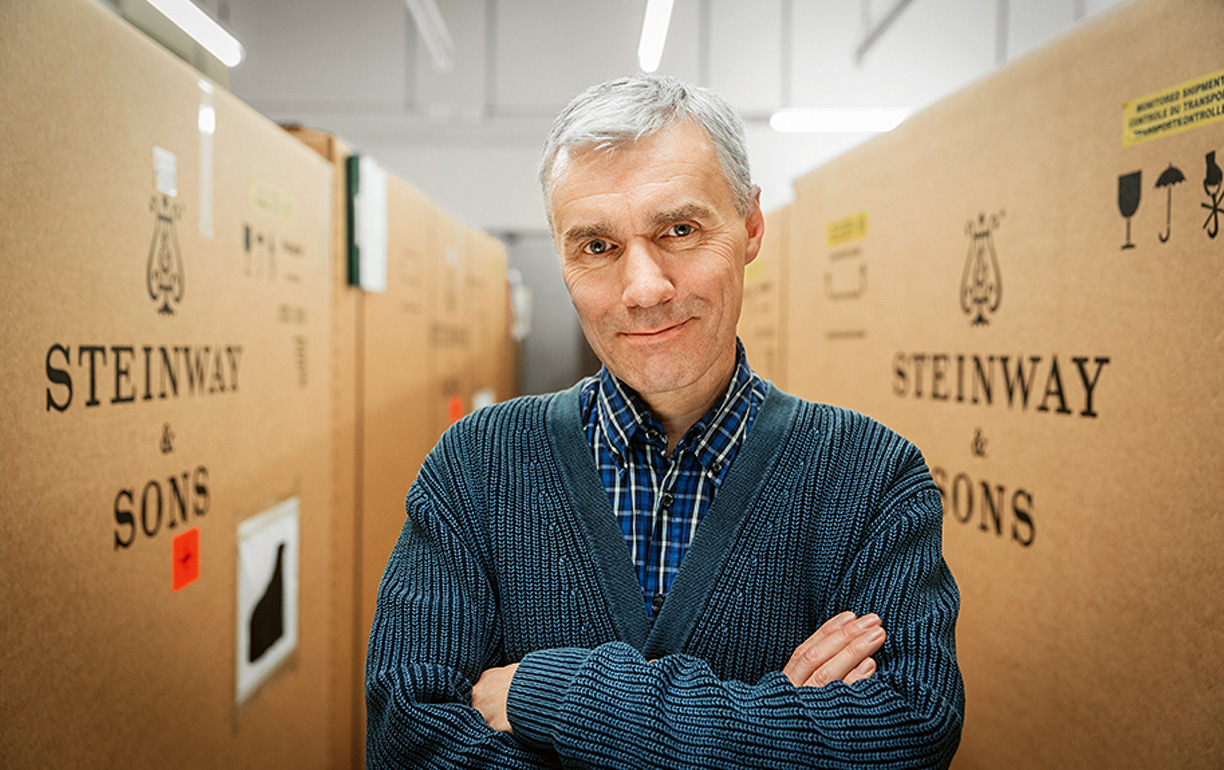
Martin Lewis and his shipping team at Steinway & Sons ensure the grand pianos are well protected using foil, a transport sled and a cardboard enclosure.
